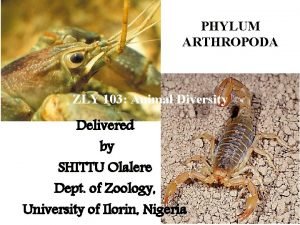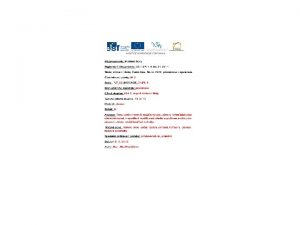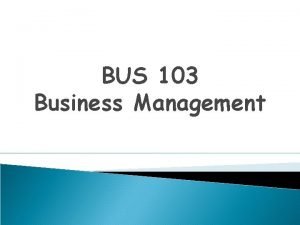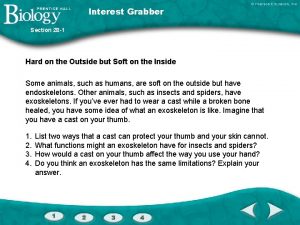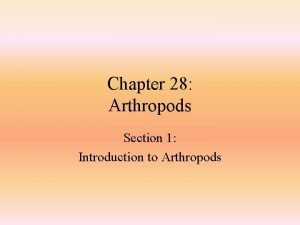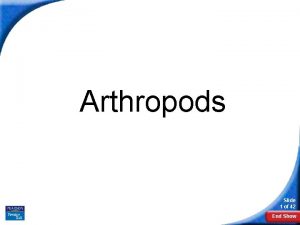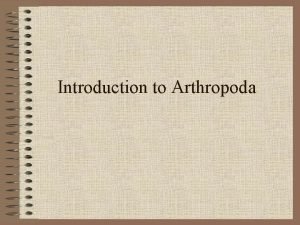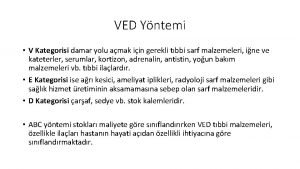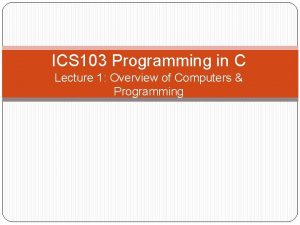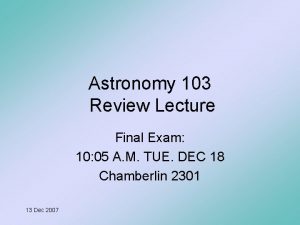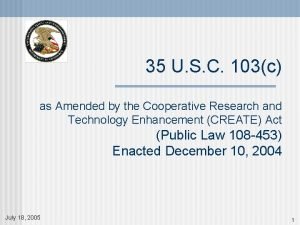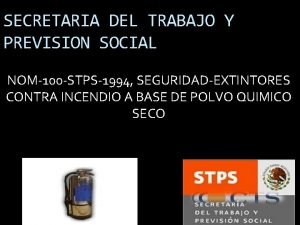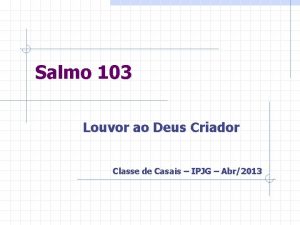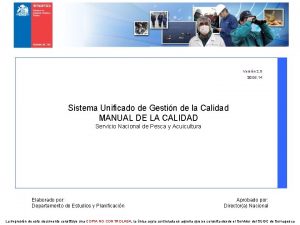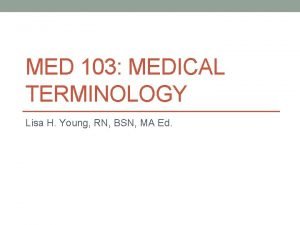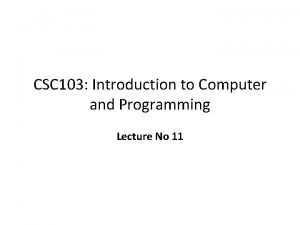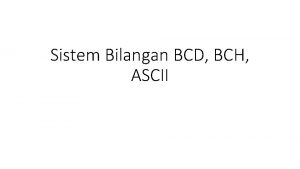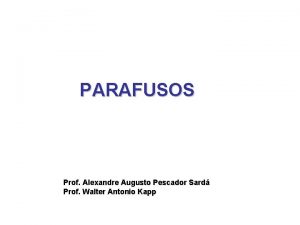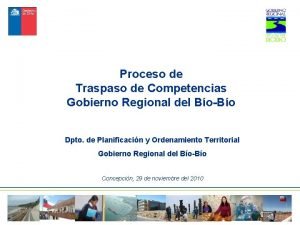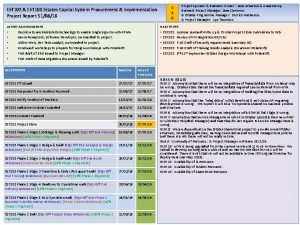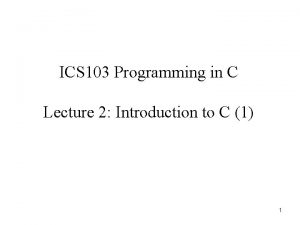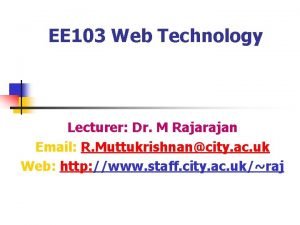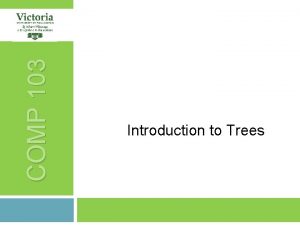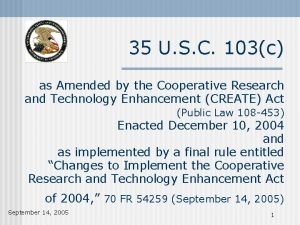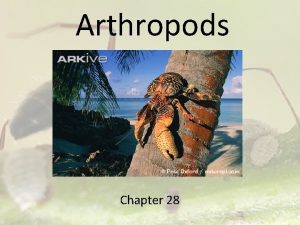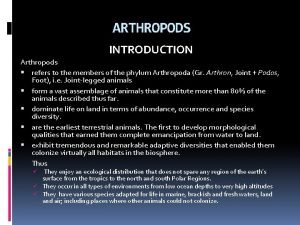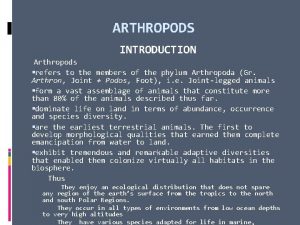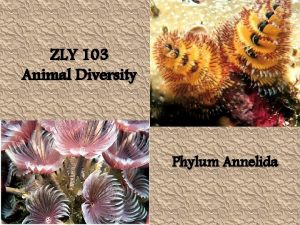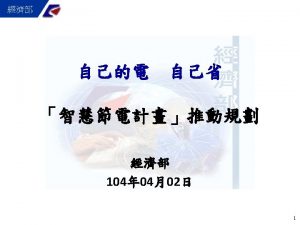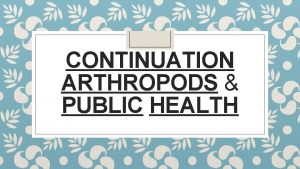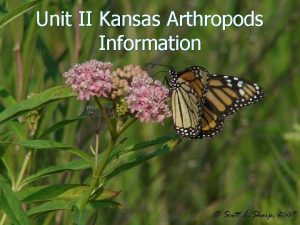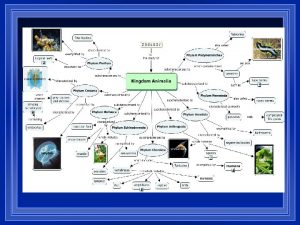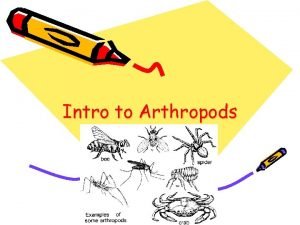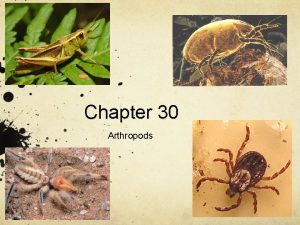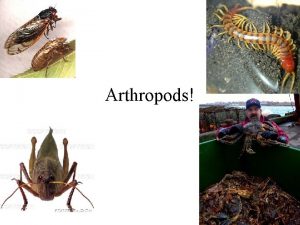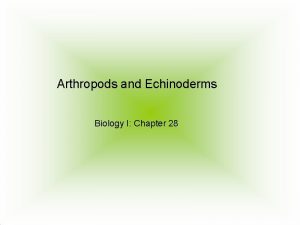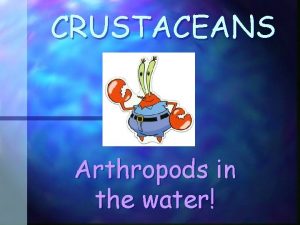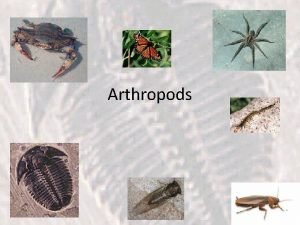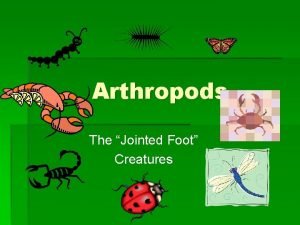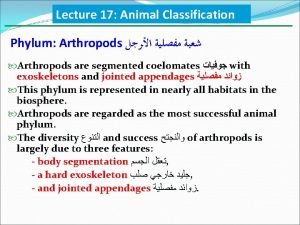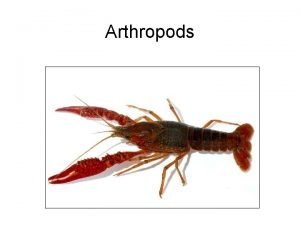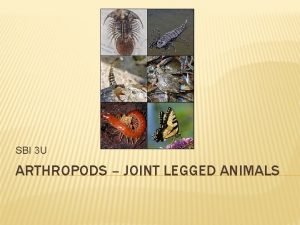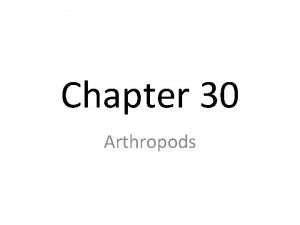ZLY 103 ARTHROPODS ARTHROPODS INTRODUCTION refers to the






























































- Slides: 62

ZLY 103 ARTHROPODS

ARTHROPODS INTRODUCTION • refers to the members of the phylum Arthropoda (Gr. Arthron, Joint + Podos, Foot), i. e. Joint-legged animals • form a vast assemblage of animals that constitute more than 80% of the animals described thus far. • dominate life on land in terms of abundance, occurrence and species diversity. • are the earliest terrestrial animals. The first to develop morphological qualities that earned them complete emancipation from water to land. • exhibit tremendous and remarkable adaptive diversities that enabled them colonize virtually all habitats in the biosphere. Thus ü They enjoy an ecological distribution that does not spare any region of the earth’s surface from the tropics to the north and south Polar Regions. ü They occur in all types of environments from low ocean depths to very high altitudes ü They have various species adapted for life in marine, brackish and fresh waters, land air; including places where other animals could not colonize.

INTRODUCTION CONT’D Athropoda • is the most influential animal phylum in all ecosystems due to its prominence, dominance and influence • as a phylum play formidable ecological roles in the functioning and sustenance of all ecosystems. • mode of feeding in arthropods is highly varied their being no organic product that is not edible to them. • are most capable of defending themselves against hazards or escaping from their enemies. They are the only group of invertebrates with flying members • share numerous ecological niches, particularly the trophic niche, with man and they happen to be more efficient at food acquisition and utilization, hence the level of hatred by man against a more successful rival.

ORIGIN AND DIAGNOSTIC FEATURES OF ARTHROPODS • Arthropods show affinities tending towards that of annelids and are believed to have evolved from annelid-like ancestors. • The arthropod body plan shares some features with the polychaetes. • These features include: v They have elongated cylindrical triploblastic, bilaterally symmetrical, metamerically segmented coelomates v Metameric segmentation in respect of ü Body demarcations, ü muscular arrangement and ü Ganglion distribution on the ventral nerve cord. ü appendages

Other Characteristic features of Arthropods not shared with Annelids 1. Their entire body surface is covered by a cuticle that is üNonliving üNoncellular üMultilayered üChitinous amino polyssacharide üStout üRigid üTough üexoskeletal üsecreted by the epidermis üHeavy v. Thus arthropods are soft bodied animals encased in a hard shell

SPECIAL FEATURES OF THE ARTHROPODAL CUTICLE The arthropod cuticle is a unique structure in so many respects and it is responsible for the success of the group. Some of the special features of the cuticle include: – Impermeability: The epicuticle and its waxy property make the cuticle impermeable to water. It therefore prevents dehydration and makes land colonization possible – Toughness: The occurrence of chitin in the procuticle makes the cuticle very tough and resistant to most naturally occurring solvents. Thus arthropods are able to colonize and inhabit all habitats. – Rigidity: The tanned arthropodin in the exocuticle proffer a hardness that ensures rigidity. A feature that is responsible for the utilization of the cuticle as support frame for muscles and the entire body. – Resilience: The combined presence of resilin, arthropodin and chitin in the procuticle informs a resilient cuticle that retains its posture after sustaining pressure. Thus the arthropod cuticle remains pliable, flexible and elastic. – Adaptability: The arthropod cuticle is such that could be modified to suit the peculiar environmental challenges of the arthropod. Thus arthropods vary in cuticular details. Arthropodal appendages also witnessed differential cuticular modifications to reflect the sensual, nutritional and reproductive needs of the animal.

Other Characteristic features of Arthropods not shared with Annelids cont’d 2. All their appendages are jointed. This explains the name Arthropoda which literarily means joint–footed animals (Gr. Arthron, Joint + Podos, Foot) 3. Their muscles run in discrete bundles and movement is effected by lever system. 4. Their Central Nervous System consist of a dorsal brain, connected to a double, ventral, solid ganglionated nerve cord by a pair of circumoesophageal connective 5. Their coelom is reduced to cavities of the gonads, pericardium and the haemocoel.

Characteristic features of Arthropods Cont’d 6. They have open vascular system consisting of a dorsal contractible tubular heart with blood flowing in haemocoelic sinuses occasioned by the loss of intersegmental septa. 7. They have a complete digestive gut that starts with a mouth equipped with variously modified appendages (mouthparts) and ends in an anus 8. They have improved respiratory system equipped with structures like gills, book lungs and tracheal system to support the active and energetic arthropod individual whose body surface is no longer available for gaseous exchange 9. They have improved excretory system mediated by glands such as antennary, coxal or maxillary glands that functions as coelomoducts. Terrestrial forms engage a more efficient and water conserving malpighian tubules. 10. Growth is achieved by moulting or ecdysial process, which entails the removal of the hard cuticle that otherwise, limits growth in the animal and replacing it with a larger one. 11. Sexes are separate and development may be direct or indirect

Growth and development • Arthropods go trough two types of develoment – Incomplete matamorphosis – Complete matamorphosis § Incomplete has three stages i, e Egg nymph adults Comlete has four stages

ARTHROPODA CLASSIFICATION • The phylom has four subphyla üTrilobita üCrustacea üChelicerata üUniramia

subphylum Trilobita • Extinct

CRUSTACEA • is a subphylum consisting of primarily aquatic arthropods • they constitute the remotest group of arthropods to man. • They are the most popular group as food item. • They show the highest variation in qsize and qforms of appendages • They derive their name from the quality of their cuticle which is hard and stony described by the latin word ‘crusta’. • is a large group with about 26000 species.

Diagnostic features 1. 2. 3. 4. 5. 6. 7. 8. Body has two tagmata, i. e. Cephalothorax and Abdomen. Number of segments on the cephalothorax and abdomen vary and so are the number, forms and functions of the appendages they carry. Each segment bear one pair of biramous appendages Cephalothorax has two pairs of anteniform pre oral appendages, i. e. Antennule and antenna. They utilize gills and general body surface for gaseous exchange Coelomoducts, i. e. green glands occurring on the antenna or maxilla are used for excretion Sexes are separate, a few species are however hermaphrodites. Development is usually indirect with a Nauplius larval stage, with very few segments and four distinct pairs of appendages (Fig 3 b)

Examples

Examples

Examples

Examples

Examples

Examples

Examples

Examples

Cyclop

Brachiurans







Crab


They are particularly popular because they are edible


CHELICERATA • The subphylum includes üterrestrial arthropods with some aquatic representatives üfamiliar arthropods like the spider, scorpion, mites and ticks • They frequent human dwellings or exist as parasites on his livestock, thus man often have contact with them • They derived their name from the non antenniform appendage (chelicerae) they possess in place of an antenna.

Diagnostic features Chelicerata is a relatively small group with the following diagnostic features: 1. Body has two tagmata, i. e. Prosoma and Opisthosoma 2. The first pair of appendage on the prosoma, i. e. chelicera is neither antenniform nor sensory 3. The other appendages on the prosoma include a pair of pedipalp and for pairs of walking legs 4. Mouthparts lack mandibulate features as it is modifies for liquid diet. 5. Opisthosoma do not carry appendages but bear anus and pores of the lung books and genital openings. 6. Respiration is by tracheal system, lung-books or gill books 7. Excretion is by coelomoducts known as coxal glands or in some cases malpighian tubules. 8. Sexes are separate and fertilization is internal in terrestrial forms



Externals of a typical cheliceratan • A typical cheliceratan shows two tagmata, i. e. 1. A prosoma that may or may not be visibly demarcated or reveal segmental demarcation but carry ü eyes that are usually simple dorsally ü a pair of chelicerae ü a pair of pedipalps and ü four serially arranged walking legs ü mouth is usually ventral between the paired limbs. 2. An opisthosoma is usually bear with segments that are not marked outwardly. However glands and other organs such as the gut and the lung books and genitalia open at different regions on the opisthosoma. • The appendage of a cheliceratan is uniramous, i. e. ends in a terminal ramus and simple. It is similar to that of insects but less varied in terms of modifications.








Daddy long legs


Subphylum Uniramia • • Terrestrial with some aquatic forms The appendages are uniramous They posses a pair of antenna A pair of simple or compond eyes A pair of mandible and Two pairs of maxillae eyes on the head Consist of two classes – Myriapoda – Insecta

Myriaopoda • has two tagmata • Head • Trunk has one pair or two pairs of legs per segment • E. g. Millipede and Centipede

Millipede

Centipede

Differences between Millipede and Centipede Millipede Centipede Two pair of legs per segment One pair of legs per segment Slow moving Fast moving Herbivorous Carnivorous First trunk segment has no appendage First pair of trunk segment bear fangs for Stinging

Class Insecta • The most diverse class of animals • Constitute 75% of all known animal species • Body has three tagmata – – – § Head Thorax Abdomen They have three thoracic segments • Prothoracic segment • Mesothoracic segment • Metathoracic segment § They have only three pairs of appendages one on each thoracic segment § They may have two pairs of wing on the last two thoracic segments

Cockroach

Ladybird beetle

Grasshopper

Butterfly

Dragon fly

Moth

Bee

Mosquito

Bees
 Zly 103
Zly 103 Oheň je dobrý sluha ale zlý pán projekt
Oheň je dobrý sluha ale zlý pán projekt Dobrý sluha ale zlý pán chemie
Dobrý sluha ale zlý pán chemie Ohen dobry sluha zly pan
Ohen dobry sluha zly pan Bus 103 introduction to business pdf
Bus 103 introduction to business pdf Section 28-1 introduction to the arthropods answer key
Section 28-1 introduction to the arthropods answer key Chapter 28 arthropods worksheet answers
Chapter 28 arthropods worksheet answers Section 28-1 introduction to the arthropods
Section 28-1 introduction to the arthropods Jointed appendages
Jointed appendages Arthropods in community health nursing
Arthropods in community health nursing 6-103/410
6-103/410 Tu 103
Tu 103 103 analizi nedir
103 analizi nedir Psalm 103:1-3
Psalm 103:1-3 Prime numbers between 101 to 200
Prime numbers between 101 to 200 Itc 103
Itc 103 Ics 103
Ics 103 Comp 103
Comp 103 Ata103
Ata103 Astronomy 103 final exam
Astronomy 103 final exam 35 usc 103(c)
35 usc 103(c) 103 rue lafayette 75010 paris
103 rue lafayette 75010 paris Nom100
Nom100 Salmos 103 louvor
Salmos 103 louvor Ece 103
Ece 103 103 table
103 table Med 103
Med 103 Gary chodorow
Gary chodorow Afi 99-103
Afi 99-103 Csc 103
Csc 103 101 102 103 104 105 106 107 108
101 102 103 104 105 106 107 108 Discernment spiritual gift
Discernment spiritual gift Binary coded hexadecimal adalah
Binary coded hexadecimal adalah Psalm 139 gnt
Psalm 139 gnt Roscas de potencia
Roscas de potencia Isaiah 103
Isaiah 103 Ee 103
Ee 103 Proyecto 103 puerto rico
Proyecto 103 puerto rico Structure of psalm 103
Structure of psalm 103 Articulo 103
Articulo 103 Phil 103
Phil 103 Subjonctif
Subjonctif Articulo 103
Articulo 103 Bus 103 est
Bus 103 est Tca 39-13-111
Tca 39-13-111 Ics 103
Ics 103 Ics 103
Ics 103 Ee103
Ee103 Cse 103
Cse 103 Comp 103
Comp 103 Comp 103
Comp 103 103 in binary
103 in binary Comp 103
Comp 103 35 usc 103
35 usc 103 Psalm 103 new living translation
Psalm 103 new living translation Hát kết hợp bộ gõ cơ thể
Hát kết hợp bộ gõ cơ thể Slidetodoc
Slidetodoc Bổ thể
Bổ thể Tỉ lệ cơ thể trẻ em
Tỉ lệ cơ thể trẻ em Chó sói
Chó sói Chụp phim tư thế worms-breton
Chụp phim tư thế worms-breton Hát lên người ơi
Hát lên người ơi Các môn thể thao bắt đầu bằng từ đua
Các môn thể thao bắt đầu bằng từ đua
